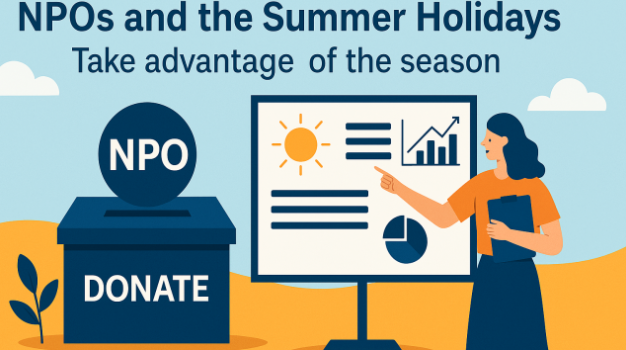Liderança | Empreendedorismo | Gestão | Planeamento | Estratégia | Escrita para Financiamento | Especialista em financiamento para desenvolvimento | Orador internacional
23 de agosto de 2025
As the summer season unfolds, non‑profit organisations often confront what is colloquially known as the “summer slump”. This is a period marked by reduced donor engagement, scaled‑down events, and a general lull in activity. Yet this perception masks a powerful opportunity: the slower pace of summer presents an ideal window for strategic planning, deepening relationships, and preparing for impactful action. Far from being a period for disengagement, summer can become a season of renewal and readiness.
Conventional fundraising rhythms tend to peak in autumn and winter, with organisations often scrambling to finalise year‑end campaigns. Experts now argue that summer should not be viewed as downtime but as a vital runway for planning and internal consolidation. Wright Collective, for instance, notes that the relative calm of summer allows teams to “strategise deeply… revisit your core message… invest in your team”. Setting the stage for a more confident fall launch.
Complementary frameworks emphasise a four‑month summer strategy. Nonprofit Pro outlines a model that begins in June with donor segmentation, continues through July with expressions of gratitude, and moves into impact storytelling and consistent communication by August . This methodical cadence ensures organisations remain visible and relationally strong throughout the “slower” months.
With donors often away, distracted, or fatigued by appeals, summer affords a unique chance to nurture relationships beyond transactional requests. Strategies such as hosting intimate “thank you” gatherings, sending handwritten notes, or sharing behind‑the‑scenes content build genuine connection in ways that resonate deeply . These actions affirm supporters’ significance and reinforce long‑term commitment.
Moreover, emphasising impact—even through simple infographics or mini‑reports—can sustain donor trust and motivation. Bloomerang highlights that clear, visual storytelling of programme outcomes (e.g. “100 families fed in June”) maintains momentum during periods when donors might otherwise drift. Maintaining consistent communication channels across newsletters and social media keeps NPOs in mind over summer. Winkler Group advises continued outreach through newsletters that promote events, share organisational updates, and offer helpful content (such as summer activity suggestions or reading lists).
Additionally, NPOs can use the summer to host lighter‑touch, community‑focused gatherings—such as volunteer opportunities, fun runs, or school‑based activities—to keep supporters connected while offering civic value. For organisations running direct services—particularly those serving children or youth summer provides a crucial developmental and public health opportunity. Systematic reviews indicate that structured summer programmes can meaningfully reduce sedentary behaviour and support healthier activity and body‑weight outcomes in children.
Beyond physical health, broader evidence demonstrates that summer programmes designed with developmental goals in mind can promote mental health, social‑emotional growth, self‑esteem, and academic retention. Even though the literature often highlights that outcomes depend on targeted design, sustained participation, and sufficient duration, it consistently suggests that well‑structured summer programmes are valuable intervention
As a strategic, relational, and programmatic opportunity, summer emerges not as a slow season to survive, but as a catalyst for growth. Through careful planning, storytelling, donor appreciation, content creativity, and purposeful programming, NPOs can lay powerful groundwork for their busiest and most impactful periods ahead. May this summer be one of empowerment and renewal for your organisation—where each quieter moment builds the seeds for meaningful, sustained progress.
References:
Augustine, C. H., et al. (2016). Effects of voluntary summer learning programs on low-income, urban youth [PDF]. The National Summer Learning Project. Retrieved from Boston Beyond.
Bloomerang. (2025, July 7). Summer fundraising strategies for nonprofits. Retrieved from Bloomerang blog.
National Academies of Sciences, Engineering, and Medicine. (2019). Shaping summertime experiences: Opportunities to promote healthy development and well-being for children and youth (Chapter 4: How do summer programs influence outcomes for children and youth?). The National Academies Press.
Nonprofit Pro. (2025, June 23). How nonprofits can use summer slump to build relationships, maximize year-end giving. Retrieved from Nonprofit Pro.
Wright Collective. (2025, June 12). Smart nonprofits use summer to prep fundraising campaigns. Retrieved from Wright Collective blog.


